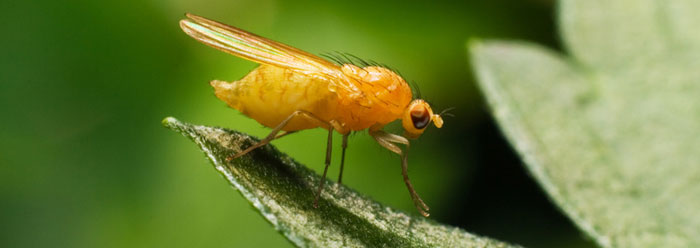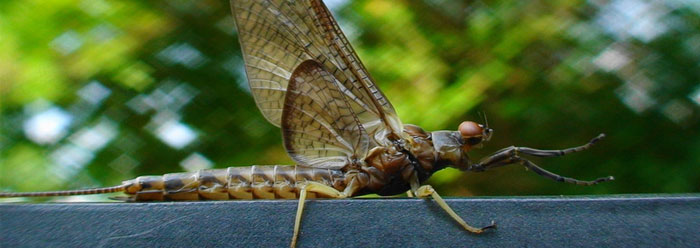Every year brings new scientific discoveries that shed light on the past. The Institute for Creation Research is dedicated to the study of origins from a biblical perspective, and ICR News has compiled what it considers to be the top findings related to origin studies from 2010. This article examines the field of zoology, and will be followed by features on breakthroughs in paleontology, astronomy, and the genome.
The Year of the Fruit Fly
The year 2010 could be considered the Year of the Fruit Fly, as it marked the 100th anniversary of the first published fruit fly genetics study—the forerunner of the burgeoning discipline of modern genetics.1 Despite evolutionist expectations, fruit flies that survived this century of mutations and manipulations have done nothing but remain members of the fruit fly kind.
This year also saw the publication of a nearly 20-year-long study designed to detect fruit fly evolution. The researchers ensured that during 600 generations of fruit flies, fast-developing individuals were separated from slow-growers. But after generations of living separately, when the two groups were finally allowed to interbreed, their offspring showed that no permanent change in speed of development had taken place and no evolution was observed.2
In 1977, the late evolutionary biologist Pierre-P. Grassé commented, "The fruitfly (Drosophila melanogaster), the favorite pet insect of the geneticists, whose geographical, biotopical, urban, and rural genotypes are now known inside out, seems not to have changed since the remotest times."3 In 2010, this summary is even more scientifically accurate. Fruit flies have not evolved because they cannot evolve.
Changes in Vertebrates Are Controlled
In contrast to the prevailing notion that most or all changes to animal features come as a result of random genetic mutations, 2010 provided a stream of studies demonstrating that such feature alterations come from regulated patterns. This shows that animals were created with certain innate abilities to adapt to new environments. Further, the speed with which these changes take place—commonly within just one generation—points to purposeful design.
One genetic study found that certain sections of dog DNA are commonly shuffled. Those sections contain information that specifies breed-distinctive traits such as ear shape, hair length, and demeanor.4 The rest of the DNA remains stable, a fact that may help explain why dogs are still dogs, even when there are substantial differences within limited characteristics.
In Heliconius butterflies, only one or two genes are used as elegant switches that turn on wing coloration patterns.5 This explains why wholesale color changes can occur in one generation. And this process has nothing to do with long ages of slowly accumulated mutations.
When the flat "hammer" portion of a hammerhead shark's head is longer, that shark is also equipped with smaller pectoral fins, and vice versa.6 This determines whether the shark is better suited to straight-line cruising with a smaller hammer or quick and sharp turning, because its fin and foil combination never produces too much or too little overall lift.
Also, fossils were found that showed that whale body sizes adjusted very quickly.7 Those specimens appearing in the fossil record already show much of the body variation that living whales have, ranging from the size of a dog up to 100 feet long. But such fast changes do not match evolution's proposed slow pace of development.
Conclusion
Future studies are expected to show specific variations in certain traits—especially traits that influence how an organism interacts with its environment—as well as studies that uncover no evidence of the evolution of a basic kind into any other.
References
- Thomas, B. 100 Years of Fruit Fly Tests Show No Evolution. ICR News. Posted on icr.org July 29, 2010, accessed December 22, 2010.
- Thomas, B. No Fruit Fly Evolution Even after 600 Generations. ICR News. Posted on icr.org November 16, 2010, accessed December 22, 2010.
- Grassé, P. P. 1977. Evolution of Living Organisms. New York: Academic Press Inc., 130. Quoted in Sherwin, F. 2006. Fruit Flies in the Face of Macroevolution. Acts & Facts. 35 (1).
- Thomas, B. Rapid Variaiton in Dog Breeds Is 'Regulated,' Not 'Evolved.' ICR News. Posted on icr.org February 12, 2010, accessed December 22, 2010.
- Thomas, B. Butterfly Mimicry Is Based on Elegant Genetic Switches. ICR News. Posted on icr.org March 18, 2010, accessed December 22, 2010.
- Thomas, B. Shark Study Hammers More Nails in Evolution's Coffin. ICR News. Posted on icr.org June 15, 2010, accessed December 22, 2010.
- Thomas, B. Whale Variations Support Creation. ICR News. Posted on icr.org June 11, 2010, accessed December 22, 2010.
* Mr. Thomas is Science Writer at the Institute for Creation Research.
Article posted on January 5, 2011.

























